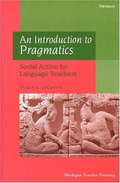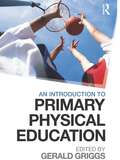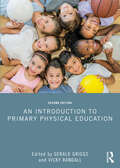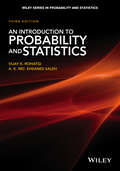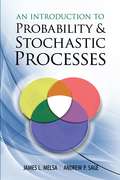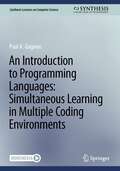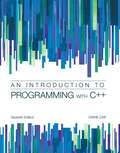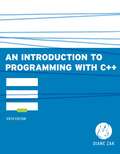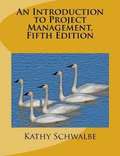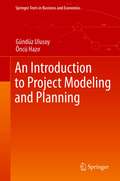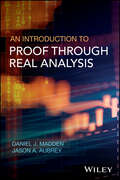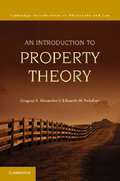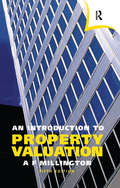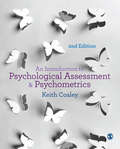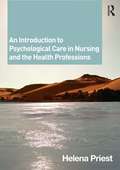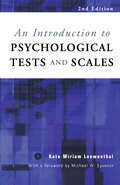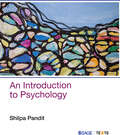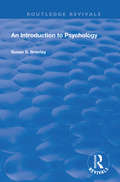- Table View
- List View
An Introduction to Pragmatics: Social Action for Language Teachers
by Virginia LocastroAn Introduction to Pragmatics is designed for use in introductory courses in pragmatics (both undergraduate and graduate level) for students preparing to teach. By including the perspective of ESL and EFL educators, this book provides prospective teachers with an understanding of pragmatics that will help them: integrate the teaching of pragmatic competence in language programs and materials understand the problems learners have with comprehension of messages requiring cognitive processing beyond that of the spoken or written word evaluate textbooks and materials as well as assessment procedures for language proficiency assess the value of communicative language teaching practices assist learners in developing strategies to handle misunderstandings and other communication problems expand knowledge of how language is used in the world by people in everyday situations, including classrooms.
An Introduction to Primary Physical Education
by Gerald GriggsPhysical Education is a core component of the primary school curriculum. The primary years are perhaps the most significant period for motor development in children, a time during which basic movement competencies are developed and which offers the first opportunity for embedding physical activity as part of a healthy lifestyle. This is the first comprehensive introduction to the teaching of PE in the primary school to be written exclusively by primary PE specialists, with primary school teaching experience. The book highlights the importance of PE in the primary curriculum and the key issues facing primary teachers today, such as inclusion, training needs and the development of creativity. Central to the book are core chapters that examine each functional area common to many primary PE syllabi – including games, dance, gymnastics, athletics and outdoor learning – and give clear, practical guidance on how to teach each topic. Rooted throughout in sound theory and the latest evidence and research, this book is essential reading for all students, trainee teachers and qualified teachers looking to understand and develop their professional practice in primary Physical Education.
An Introduction to Primary Physical Education
by Gerald Griggs Vicky RandallNow in a fully revised and fully updated new edition, this comprehensive introduction to the teaching of Physical Education in primary schools is still the only textbook to cover the full sweep of the subject, from policy and curriculum developments to best practice and current debates. Written exclusively by primary Physical Education specialists, with primary school teaching experience, the book highlights the importance of Physical Education in the primary curriculum and the key issues facing primary teachers today, such as inclusion, training needs and the development of creativity. Central to the book are core chapters that examine each functional area common to many primary Physical Education syllabi – including games, dance, gymnastics, athletics and outdoor learning – and give clear, practical guidance on how to teach each topic. This new edition includes three completely new chapters, covering leadership, stakeholder interest in Physical Education delivery, and how to manage transitions. Rooted throughout in sound theory and the latest evidence and research, this book is essential reading for all students, trainee teachers and qualified teachers looking to understand and develop their professional practice in primary Physical Education.
An Introduction to Probabilistic Number Theory (Cambridge Studies in Advanced Mathematics #192)
by Emmanuel KowalskiDespite its seemingly deterministic nature, the study of whole numbers, especially prime numbers, has many interactions with probability theory, the theory of random processes and events. This surprising connection was first discovered around 1920, but in recent years the links have become much deeper and better understood. Aimed at beginning graduate students, this textbook is the first to explain some of the most modern parts of the story. Such topics include the Chebychev bias, universality of the Riemann zeta function, exponential sums and the bewitching shapes known as Kloosterman paths. Emphasis is given throughout to probabilistic ideas in the arguments, not just the final statements, and the focus is on key examples over technicalities. The book develops probabilistic number theory from scratch, with short appendices summarizing the most important background results from number theory, analysis and probability, making it a readable and incisive introduction to this beautiful area of mathematics.
An Introduction to Probability and Inductive Logic
by Ian HackingThis is an introductory textbook on probability and induction written by one of the world's foremost philosophers of science. The book has been designed to offer maximal accessibility to the widest range of students (not only those majoring in philosophy) and assumes no formal training in elementary symbolic logic. It offers a comprehensive course covering all basic definitions of induction and probability, and considers such topics as decision theory, Bayesianism, frequency ideas, and the philosophical problem of induction. The key features of the book are: * A lively and vigorous prose style* Lucid and systematic organization and presentation of the ideas* Many practical applications* A rich supply of exercises drawing on examples from such fields as psychology, ecology, economics, bioethics, engineering, and political science* Numerous brief historical accounts of how fundamental ideas of probability and induction developed. * A full bibliography of further reading Although designed primarily for courses in philosophy, the book could certainly be read and enjoyed by those in the social sciences (particularly psychology, economics, political science and sociology) or medical sciences such as epidemiology seeking a reader-friendly account of the basic ideas of probability and induction. Ian Hacking is University Professor, University of Toronto. He is Fellow of the Royal Society of Canada, Fellow of the British Academy, and Fellow of the American Academy of Arts and Sciences. he is author of many books including five previous books with Cambridge (The Logic of Statistical Inference, Why Does Language Matter to Philosophy?, The Emergence of Probability, Representing and Intervening, and The Taming of Chance).
An Introduction to Probability and Statistics
by Vijay K. Rohatgi A.K. Md. SalehA well-balanced introduction to probability theory and mathematical statistics Featuring a comprehensive update, An Introduction to Probability and Statistics, Third Edition remains a solid overview to probability theory and mathematical statistics. Divided into three parts, the Third Edition begins by presenting the fundamentals and foundations of probability. The second part addresses statistical inference, and the remaining chapters focus on special topics. Featuring a substantial revision to include recent developments, An Introduction to Probability and Statistics, Third Edition also includes: A new section on regression analysis to include multiple regression, logistic regression, and Poisson regression A reorganized chapter on large sample theory to emphasize the growing role of asymptotic statistics Additional topical coverage on bootstrapping, estimation procedures, and resampling Discussions on invariance, ancillary statistics, conjugate prior distributions, and invariant confidence intervals Over 550 problems and answers to most problems, as well as 350 worked-out examples and 200 remarks Numerous figures to further illustrate examples and proofs throughout An Introduction to Probability and Statistics, Third Edition is an ideal reference and resource for scientists and engineers in the fields of statistics, mathematics, physics, industrial management, and engineering. The book is also an excellent text for upper-undergraduate and graduate- level students majoring in probability and statistics.
An Introduction to Probability and Stochastic Processes (Dover Books on Mathematics)
by Andrew P. Sage James L. MelsaGeared toward college seniors and first-year graduate students, this text is designed for a one-semester course in probability and stochastic processes. Topics covered in detail include probability theory, random variables and their functions, stochastic processes, linear system response to stochastic processes, Gaussian and Markov processes, and stochastic differential equations. 1973 edition.
An Introduction to Programming Languages: Simultaneous Learning in Multiple Coding Environments (Synthesis Lectures on Computer Science)
by Paul A. GagniucAfter a short introduction on the history of programming languages, this book provides step-by-step examples that are mirrored in seven programming languages, including C#, C++, Java, JavaScript, PERL, PHP, Python, Ruby, VB, and VBA. This mirrored approach for each of the examples represents the main feature of the book with the goal of gaining a better understanding of the advantages and disadvantages of programming and scripting languages. This approach also allows readers to learn the mechanics of short implementations and the algorithms involved, no matter what technology and programs are used in the future. Based on the growing need for programmers to be proficient across languages, the book is designed in such a way that no prior training or exposure to the programming languages is needed by readers.
An Introduction to Programming Using Microsoft Visual Basic .net
by Beth Brown Bruce PresleyAn Introduction to Programming Using Microsoft Visual Basic .NET is written for a one-term or two-term course. No previous programming experience is required or assumed. It is the goal of this text to provide students the best possible introduction to programming using Visual Basic .NET, whether they will continue on to more advanced computer science courses or end their programming education with this introductory course.
An Introduction to Programming Using Microsoft Visual Basic® 2010
by Jan MarrelliAn Introduction to Programming Using Visual Basic 2010 emphasizes good problem-solving and programming skills in a clear, easy-to-understand format. Object-oriented programming concepts are integrated throughout the text and each chapter explains the use of Visual Basic controls. Example Applications throughout the text demonstrate important programming concepts and are complete with runs that show outputs. Written and classroom tested by experienced programming teachers, our Visual Basic 2010 text describes many of the practical applications of Visual Basic and includes: Core programming concepts; Using built-in classes; Color, sound, and graphics; Business functions; Creating classes and understanding instantiation, encapsulation, inheritance, and polymorph ism; Manipulating files; MDI applications; Databases and Web Programming. An Introduction to Programming Using Visual Basic 2010 is an excellent text for an introductory programming course in a sequence leading to Java. - Publisher.
An Introduction to Programming with C++ (6th Edition)
by Diane ZakAn Introduction to Programming with C++, Sixth Edition is the latest C++ offering from Diane Zak. This book is distinct from other textbooks because of its unique approach, which motivates students by demonstrating why they need to learn the concepts and skills presented. Each chapter contains Mini-Quizzes, Labs, and Try This features to help readers practice and absorb the content as they go along. This edition also includes completely new applications and exercises, more IPO charts and flowcharts, and a brand new interior design.
An Introduction to Project Management
by Kathy SchwalbeThe fifth edition of An Introduction to Project Management provides a separate chapter for planning integration and scope management and for planning time and cost management. Additional examples are provided for creating work breakdown structures and schedules. It also includes information on Basecamp, a free web-based project management tool, along with a user guide (replaces AtTask in Appendix B). In addition to updating many references and examples, this edition continues to include several popular features: - Follows the Project Management Institute's PMBOK® Guide, Fifth Edition (2013) - Has chapters for each process group and a comprehensive case study to illustrate applying tools and techniques throughout the project life cycle - Includes a Guide for using Microsoft Project 2013 - Provides a free trial of MatchWare's MindView Business software (www.matchware.com/intropm), a tool for creating mind maps, Gantt charts, and other project documents - Uses real-world examples and references, including opening cases and case wrap-ups, examples of what went right, what went wrong, media snapshots, best practices, and video highlights in each chapter - End of chapter materials include chapter summaries, quick quizzes, discussion questions, and exercises, with case studies provided in Appendix C -Comprehensive, secure instructor site available with lecture slides, solution files, test banks, etc. -Free Web site includes over fifty template files, online quizzes and games, data files for Project 2013, links to sites mentioned in the text, and much more.
An Introduction to Project Modeling and Planning (Springer Texts in Business and Economics)
by Gündüz Ulusoy Öncü HazırThis textbook teaches the basic concepts and methods of project management, but also explains how to convert it to useful results in practice. Project management offers a promising working area for theoretical and practical applications, and developing software and decision support systems (DSS). This book specifically focuses on project planning and control, with an emphasis on mathematical modeling. Models and algorithms establish a good starting point for students to study the relevant literature and support pursuing academic work in related fields. The book provides an introduction to theoretical concepts, and it also provides detailed explanations, application examples and case studies that deal with real life problems. The chapter topics include questions that underlie critical thinking, interpretation, analytics, and making comparisons. Learning outcomes are defined and the content of the book is structured in accordance with these goals. Chapter 1 begins by introducing the basic concepts, methods and processes of project management. Chapter 2 explores the fundamentals of organizing and managing projects from an organization’s perspective. Issues related to project team formation, role of project managers, and matrix organization are discussed. Chapter 3 is devoted to project modeling and planning. It explains how to collect proper data in order to perform an analysis and develop mathematical models. Chapter 4 introduces deterministic scheduling models, which can be used in constructing the time schedules. Models employing time-based and finance-based objectives are introduced. Chapter 5 focuses on the time/cost trade-off problem, explaining how to reduce the duration of some of the activities and therefore accelerate the project duration at the expense of additional costs. Chapter 6 introduces different resource management policies including resource portfolio management. Chapter 7 discusses models and methods of scheduling in case of uncertainty models and methods of scheduling in case of uncertainty. Chapter 8 highlights contract types and payment schedules. It explores identification and allocation of risk in contracts, project control issues, disputes and resolution management. Different models and decision support systems are presented in Chapter 9 in order to investigate client-contractor negotiations and the bidding process from different aspects. Chapter 10 covers monitoring and control, mainly the processes and methods behind them. Chapter 11 brings together qualitative and quantitative techniques with simulation and software applications. The design of a risk management process is introduced in detail and at the hand of a case study. Chapter 12 examines several models and approaches of uncertainty in project scheduling, dealing with various aspects of stochastic nature of the decision environment and robustness. Chapter 13 explains the mathematical formulation and solution procedures for resource constrained project scheduling. The project selection problem is inherently a multi-objective problem and is treated as such in Chapter 14. Several models and solution techniques including robust selection methods are introduced. Finally Chapter 15 evaluates recent approaches and promising research areas in project management including strategic project management, agile approaches, and data management in project modeling in the big data era.
An Introduction to Proof through Real Analysis
by Daniel J. Madden Jason A. AubreyAn engaging and accessible introduction to mathematical proof incorporating ideas from real analysis A mathematical proof is an inferential argument for a mathematical statement. Since the time of the ancient Greek mathematicians, the proof has been a cornerstone of the science of mathematics. The goal of this book is to help students learn to follow and understand the function and structure of mathematical proof and to produce proofs of their own. An Introduction to Proof through Real Analysis is based on course material developed and refined over thirty years by Professor Daniel J. Madden and was designed to function as a complete text for both first proofs and first analysis courses. Written in an engaging and accessible narrative style, this book systematically covers the basic techniques of proof writing, beginning with real numbers and progressing to logic, set theory, topology, and continuity. The book proceeds from natural numbers to rational numbers in a familiar way, and justifies the need for a rigorous definition of real numbers. The mathematical climax of the story it tells is the Intermediate Value Theorem, which justifies the notion that the real numbers are sufficient for solving all geometric problems. • Concentrates solely on designing proofs by placing instruction on proof writing on top of discussions of specific mathematical subjects • Departs from traditional guides to proofs by incorporating elements of both real analysis and algebraic representation • Written in an engaging narrative style to tell the story of proof and its meaning, function, and construction • Uses a particular mathematical idea as the focus of each type of proof presented • Developed from material that has been class-tested and fine-tuned over thirty years in university introductory courses An Introduction to Proof through Real Analysis is the ideal introductory text to proofs for second and third-year undergraduate mathematics students, especially those who have completed a calculus sequence, students learning real analysis for the first time, and those learning proofs for the first time. Daniel J. Madden, PhD, is an Associate Professor of Mathematics at The University of Arizona, Tucson, Arizona, USA. He has taught a junior level course introducing students to the idea of a rigorous proof based on real analysis almost every semester since 1990. Dr. Madden is the winner of the 2015 Southwest Section of the Mathematical Association of America Distinguished Teacher Award. Jason A. Aubrey, PhD, is Assistant Professor of Mathematics and Director, Mathematics Center of the University of Arizona.
An Introduction to Property Theory
by Gregory S. Alexander Eduardo M. PeñalverThis book surveys the leading modern theories of property - Lockean, libertarian, utilitarian/law-and-economics, personhood, Kantian and human flourishing - and then applies those theories to concrete contexts in which property issues have been especially controversial. These include redistribution, the right to exclude, regulatory takings, eminent domain and intellectual property. The book highlights the Aristotelian human flourishing theory of property, providing the most comprehensive and accessible introduction to that theory to date. The book's goal is neither to cover every conceivable theory nor to discuss every possible facet of the theories covered. Instead, it aims to make the major property theories comprehensible to beginners, without sacrificing accuracy or sophistication. The book will be of particular interest to students seeking an accessible introduction to contemporary theories of property, but even specialists will benefit from the book's lucid descriptions of contemporary debates.
An Introduction to Property Valuation
by Alan MillingtonIt is now 25 years since the first edition of this book was written, and the objectives of the fifth edition remain the same as those of the first edition, that is to provide "an introduction to and general background reading for the subject of property valuation". It is directed not just at would be surveyors and valuers, but at all those who may be interested in getting an understanding of property valuation.
An Introduction to Psycho-Oncology
by Patrice GuexCancer is extremely common and in many situations a truly frightening disease, but for too long the psychological aspects and effects have been ignored. An Introduction to Psycho-Oncology deals in a clear and simple manner with the reactions of cancer patients to their illness, and the ways in which they can be helped. In the context of a multidisciplinary approach that takes account of medical treatments as well as psychological interventions, Guex offers suggestions for better ways of communicating so as to provide a therapeutic partnership between carer and client.
An Introduction to Psycholinguistics (Learning about Language)
by Danny D. Steinberg Natalia V. SciariniLearning About Language is an exciting and ambitious series of introductions to fundamental topics in language, linguistics and related areas. The books are designed for students of linguistics and those who are studying language as part of a wider course. Cognitive Linguistics explores the idea that language reflects our experience of the world. It shows that our ability to use language is closely related to other cognitive abilities such as categorization, perception, memory and attention allocation. Concepts and mental images expressed and evoked by linguistic means are linked by conceptual metaphors and metonymies and merged into more comprehensive cognitive and cultural models, frames or scenarios. It is only against this background that human communication makes sense. After 25 years of intensive research, cognitive-linguistic thinking now holds a firm place both in the wider linguistic and the cognitive-science communities.An Introduction to Cognitive Linguistics carefully explains the central concepts of categorizaÂtion, of prototype and gestalt perception, of basic level and conceptual hierarchies, of figure and ground, and of metaphor and metonymy, for which an innovative description is provided. It also brings together issues such as iconicity, lexical change, grammaticalization and language teaching that have profited considerably from being put on a cognitive basis.The second edition of this popular introduction provides a comprehensive and accessible up-to-date overview of Cognitive Linguistics: Clarifies the basic notions supported by new evidence and examples for their application in language learning Discusses major recent developments in the field: the increasing attention paid to metonymies, Construction Grammar, Conceptual Blending and its role in online-processing. Explores links with neighbouring fields like Relevance Theory Uses many diagrams and illustrations to make the theoretical argument more tangible Includes extended exercises Provides substantial updated suggestions for further reading.
An Introduction to Psychological Assessment and Psychometrics
by Keith CoaleyIn An Introduction to Psychological Assessment and Psychometrics, Keith Coaley outlines the key ingredients of psychological assessment, providing case studies to illustrate their application, making it an ideal textbook for courses on psychometrics or psychological assessment.<P><P> New to the Second Edition:<P> * Includes occupational and educational settings<P> * Covers ethical and professional issues with a strong practical focus<P> * Case study material related to work selection settings <P> * End of chapter self-assessments to facilitate students’ progress<P> * Complaint with the latest BPS Certificate of Testing curriculum
An Introduction to Psychological Care in Nursing and the Health Professions
by Helena PriestCaring is at the core of what nurses and other health professionals do. But caring encompasses more than simply looking after people’s physical health needs. People requiring any health service will have psychological needs that affect their feelings, thoughts, and behaviour. Good psychological care can even help improve physical health outcomes. An Introduction to Psychological Care in Nursing and the Health Professions explains and promotes the importance of psychological care for people when they become physically ill, giving a sound theoretical basis to ensure care is evidence-based. It encourages the reader to think about the effects of illness and disability on patients, and to understand what can be done to identify and minimise any difficulties they might be experiencing in these areas. The chapters cover: the meaning and elements of care and holistic care; a model of psychological care in practice; the personal qualities and skills of carers that best underpin psychological care delivery, and how these might be enhanced; the knowledge needed for effective psychological caregiving; psychological care as it might be practised in a range of health care settings. This text contains key learning points, practical activities, reflective exercises and case illustrations. It is ideal for student and practising nurses, and health professionals who would like to improve their care for patients in this essential area.
An Introduction to Psychological Tests and Scales
by Kate Loewenthal Christopher Alan LewisIn its first edition this book successfully enabled readers, with little or no prior knowledge of computing or statistics, to develop reliable and valid tests and scales for assessment or research purposes. In this edition, the author has thoroughly updated the text to include new recent advances in computer software and provide information on relevant internet resources. The book contains detailed guidelines for locating and constructing psychological measures, including descriptions of popular psychological measures and step-by-step instructions for composing a measure, entering data and computing reliability and validity of test results. Advanced techniques such as factor analysis, analysis of covariance and multiple regression analysis are presented for the beginner.An Introduction to Psychological Tests and Scales provides a clear, concise and jargon-free primer for all those embarking in fieldwork or research analysis. It will be an invaluable tool for undergraduates and postgraduates in psychology and a useful text for students and professionals in related disciplines.
An Introduction to Psychological Tests and Scales
by Christopher Alan Lewis Kate Miriam LoewenthalThis text is a vital resource for those with little or no prior knowledge of computing or statistics to aid in the development of reliable and valid tests and scales for assessment or research purposes. It serves as a clear, concise and jargon-free primer for all those embarking in fieldwork or research analysis. The book contains detailed guidelines for locating and constructing psychological measures, including descriptions of popular psychological measures and step-by-step instructions for composing a measure, entering data, and computing reliability and validity of test results. Advanced techniques such as factor analysis, analysis of covariance, and multiple regression analysis are presented for the beginner. This new edition has been revised throughout and includes updated statistical test procedures in line with the new version of SPSS and the inclusion of current academic articles. It serves as an invaluable resource for undergraduates and postgraduates across the behavioral and social sciences, as well as professionals in related disciplines, including those working in management and medical sciences.
An Introduction to Psychology
by Shilpa PanditA comprehensive, inter-disciplinary foundational book on psychology with socio-cultural contexts and practical applications This textbook is specifically designed to provide foundational knowledge to students of psychology. It explains the basic principles of psychology in a clear and accessible manner. It uses examples drawn from real life to provide a context for the theories of psychology. The book is unique in the way it introduces the study of psychology in the context of Indian issues and culture. It integrates indigenous perspectives on topics such as yoga, cognition and health with conventional theories of psychology without compromising on scientific rigour. Each chapter is designed to engage the learners by presenting practical applications of theories as well as relevant stories from Indian and international media. These features along with recent research studies and possible future research questions in the field make Introduction to Psychology an indispensable manual for Indian students of psychology. Key Features: • Examples from the Indian context to make the content more relatable to students • Inter-disciplinary approach which relates psychology to allied subjects like sociology and cognitive sciences • Updated with information about current trends in research in the subject • Follows the curriculum of major Indian universities
An Introduction to Psychology (Routledge Revivals)
by Susan S. BrierleyOriginally published in 1921, this introduction to psychology includes chapters on the definitions and methods related to psychology; organism and environnment; and instinct and intelligence.
